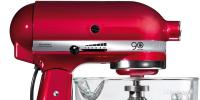10 Tips to Optimize Your AV Receiver
This is the heart of the home theater. However, the device will be able to demonstrate its full potential only if it is correctly installed and with optimal settings. 10 tips from Video Magazine to help you enjoy the full range of your amplifier.
Tip 1: Keep the cable as short as possible
A home theater amplifier is best placed near a TV, Blu-ray player, and satellite receiver. In this case, you do not need to lay long cables between sources and playback devices.
Tip 2: Cool down
If you do not take care of the free removal of warm air from the body of the AV receiver during its operation, you can provoke the device to overheat. In modern amplifiers, a protective mechanism is activated that stops the operation of the receiver, protecting components sensitive to high temperatures from irreversible damage. But even with such protection, it is highly undesirable to bring the device to overheating.
To ensure sufficient cooling, the amplifier should be placed in an open area, so that air can flow from all sides. The ventilation slots located in the upper part of the housing must be open. If you intend to put the AV receiver on an open shelf, ensure that there is at least three centimeters of free space above the top of the cabinet.
If you plan to place your amplifier in some kind of closed niche, then special attention will have to be paid to ventilation. The best solution here would be holes in the walls of the niche, which you can drill yourself. This is the only way to ensure the required level of ventilation. The larger the number and the larger the holes, the better. They will perform not only a ventilation function, but also provide free and easy access to the device when you need to connect numerous audio and video cables to it.
Tip 3: If the AV receiver needs to be hidden
If you do not want the amplifier to be constantly in front of your eyes, you can put it in a cabinet or put it on a closed shelf. However, it will continue to clearly respond to commands from the remote control if you install an external infrared receiver. IR remote control systems are commercially available at prices starting at 20 euros from various manufacturers.
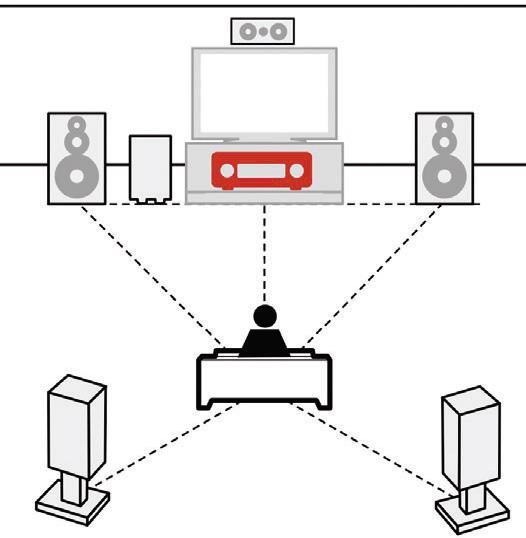
For a home theater amplifier, it is better to choose a central location: this guarantees a minimum length of cabling. In this case, the length of the cables connecting the left and right channels to the amplifier will also be identical.
Tip 4: Proper cable connection
HDMI technology, designed to transmit high-definition multimedia signals, provides parallel passage of audio and video data over the cable of the same name. Therefore, satellite TV receivers, Blu-ray players and game consoles are connected directly to the HDMI ports of your amplifier.
Therefore, the Blu-ray player no longer needs to be connected to the amplifier with a separate digital audio cable. A TV or video projector is also connected directly to the AV receiver's HDMI output. When we switch from DVD to a satellite receiver while selecting a source, the audio and video are switched simultaneously.
If you are using the TV's built-in satellite or cable receivers, the TV sound can be amplified through the Audio Return Channel (ARC). An additional cable in this case is also not required. Please note that on most TVs, digital audio can only be transmitted through HDMI ports that carry the ARC mark.
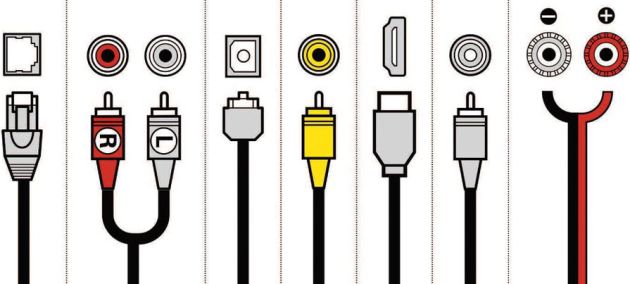
1. RJ-45 digital interface to provide network functions. 2. RCA analog stereo output for connecting audio sources 3. Toslink optical digital interface for connecting audio sources. 4. Analog mono output with RCA connector for connecting video sources 5. HDMI digital interface for audio and video data transfer. 6. Analog RCA mono connector for active subwoofer. 7. Terminals with polarity indication for analog connection of audio systems.
Tip 5: Reliable Contacts
If the signal cannot be transmitted normally, no, even the best equipment will not help. Plugs for popular HDMI, Toslink and RCA interfaces are guaranteed to provide reliable contacts, but special attention should be paid to terminating loose cables from speaker systems. Do not twist loose cable cores and clamp them with amplifier terminals. Use banana plugs or cable lugs instead.
Attention: during operation, be sure to use gloves: this way you will protect the copper conductors of the cable from getting grease and dirt; the resulting plaque can subsequently affect the contact resistance, which will negatively affect the quality of the signal transmission.
Tip 6: Don't get tangled up in wires
In order not to get lost in the multitude of audio and video cables, it is recommended to sign them. So, for example, if labels with marks are stuck on speaker cables, then later, when connecting a surround sound system, there will be no confusion.
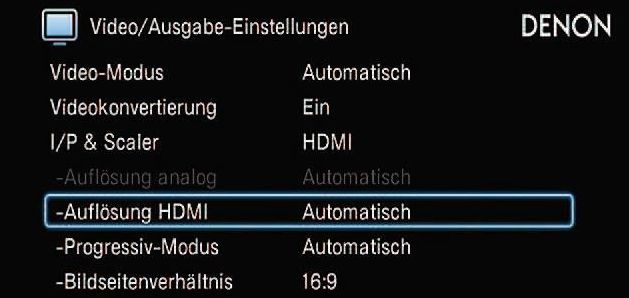
Thanks to high-performance video processors, modern AV receivers allow you to optimize the incoming video signal for resolution, sharpness, and color balance.
Tip 7: Adjust video quality
More and more modern AV receivers have a powerful built-in video processor that processes digital video data. It also allows up-scaling of video transmitted via HDMI. For example, a PAL signal with a resolution of 576 lines coming from a game console can be converted into an HD stream with a resolution of 1,080 lines by the amplifier.
More expensive AV receivers allow you to adjust the resolution, sharpness, color balance and brightness separately for each input. Thus, the consumer can enjoy maximum picture quality from the TV set, Blu-ray player and game console. Here it is important to decide on which device it is better to activate the upscaling function.
After all, Blu-ray players, television receivers, amplifiers and televisions for the most part have built-in processors that provide this function. Therefore, it is better to check for yourself which of the video processors will give the best result when converting the standard definition of a PAL signal to HD resolution.
The latest AV receivers are capable of upscaling up to 4K, which holds four times as many pixels as Full HD. However, 4K resolution can only be selected if it is supported by your TV.
During the launch of video games, the precise synchronization of sound and image becomes especially important, so some manufacturers have provided a special game mode. By setting it, you minimize the delay of the video in relation to the sound.
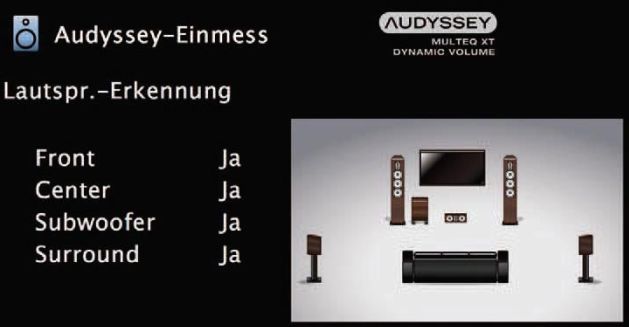
An automatic audio system calibration system will be very useful in setting the optimal parameters for the speakers on the amplifier.
Tip 8: Setting up surround sound
Your set of speakers will be able to fully demonstrate the quality of its sound only after you set all the necessary settings on the AV receiver. In this case, it is necessary to achieve maximum consistency in the sound of the front, center, rear boxes and subwoofer. If the amplifier has a built-in system for calibrating acoustics, then first of all we try automatic tuning.
With the help of a calibration microphone, the optimal parameters for volume, tone and the required time shift for each speaker are set. If you want to independently select the desired parameters, you should use a tape measure and a signal level meter. To achieve optimal sound, you need to accurately measure and adjust the distances from the speakers to the listening position, as well as set and match the signal levels from each speaker to each other.
Tip 9: Dynamic Range Adjustment
Use caution when using various effects that affect the dynamics of the sound. Superimposed audio effects often significantly reduce the dynamic range, thus equalizing the volume differences within a musical composition or a soundtrack for a film. You can enjoy the dynamics to the maximum extent and, accordingly, undistorted sound only using standard surround sound formats, without activating additional sound effects programs.
Depending on the size of the loudspeakers used, the crossover frequency that determines the transition between the subwoofer and the satellites can be different. When determining it, we follow the rule: the larger the front speaker system, the lower the crossover frequency. If you are having problems with bass reproduction, you can try to find another place for the subwoofer and slightly increase the crossover frequency of the subwoofer.

The so-called remote control applications (Remote App) allow you to control modern amplifiers from smartphones and tablets.
Tip 10: Set up access to media libraries
Modern AV receivers have the ability to access Internet radio stations and network music services. The choice of compositions is so great that there is sure to be music corresponding to any preferences and suitable for any mood. The only thing you need to receive and listen to music is that the amplifier is connected to your home network and, accordingly, to the Internet.
The DLNA network standard, supported by modern devices, provides access to media libraries located on a computer or on local network storages. If the AV receiver supports the AirPlay standard or has built-in Bluetooth, then music can be transferred to the amplifier from a smartphone or tablet wirelessly.
Sound formats and effects
To ensure authentic surround sound, the soundtrack of movies is encoded for playback on a 5-channel (or more) audio system. Companies such as Dolby and DTS provide modern receivers with built-in digital decoders that are responsible for correctly converting the encoded signal.
In standard surround sound formats such as Dolby Digital or DTS Digital Surround, the audio data is decoded and the soundtracks are passed unaltered to the preamplifier. Systems that provide additional audio effects, such as DTS Neo and Dolby Pro Logic, on the contrary, synthesize multi-channel sound from a conventional stereo signal, so they are essentially not decoders, but encoders.
Most AV receivers provide a choice of other sound effects that are not essentially related to true surround sound: these are the effects of "Theater", "Music Hall", "Sci Fi" or "Adventure". These sound effects can be applied to almost any audio format designed for surround sound. Speakers are tuned to reproduce a standard format, when you select any effect, the signal begins to additionally pass through the appropriate sound filter.
In addition, there are standard audio encoding programs such as Dolby Virtual Speaker and Dolby Headphone. Special coding algorithms by changing the volume, delay time and tone of the signal create a certain acoustic illusion, while taking into account the characteristics of the reproducing devices.
And by the way: THX is not an audio format or a program for modulating sound effects. THX is the designation of the quality control standard.




